Recloaking Papatūānuku (Recloaking Mother Earth)
With a grand vision for long-term restoration, areas once barren and lacking in biodiversity will, over time soon be enveloped in a vibrant green ‘cloak’ of native vegetation. Mother Earth herself, Papatūānuku, will reclaim her rightful beauty, and our park ecosystems will flourish with newfound vitality. Join us on this journey towards a healthier, greener future!
Between 2021 and 2024, we planted over 800,000 native plants across 343 hectares of formerly grazed areas in the regional parks. We will continue planting at a rate of about 50-70 hectares per year for the next few years.
The funding for Recloaking Papatūānuku comes from Greater Wellington's ‘Low carbon acceleration fund’ (LCAF) and from the Long-Term Plan. The LCAF was established in 2020 by borrowing against a free allocation of carbon credits received for pre-existing forests on Greater Wellington land.
Ngahere Korowai are a community group with a vision to recloak the bare hills around Porirua with native flora.
Ka ora te wai
Ka ora te whenua
Ka ora te whenua
Ka ora te tangata
If the water is healthy
the land will be nourished
If the land is nourished
the people will be provided for
Toitū Te Whenua has six goals and many actions to help achieve them. The first goal is Natural heritage – Protect and restore high levels of terrestrial and freshwater ecosystem health to enhance indigenous biodiversity and ecosystem services. The Recloaking Papatūānuku programme helps to deliver this goal.
Restoration isn’t just about forests. It’s also wetlands and riparian areas of streams, rare and threatened species and species of cultural value. Original vegetation types will be restored wherever possible and include some unique vegetation. For example, much of the headland of Baring Head/Ōrua-pouanui was once covered with grey scrub, including species well adapted to strong salt laden winds. Restoration work has brought back forest and shrub lands, saving rare and threatened ecosystems.
Carbon emission reduction and sequestration opportunities
Stock and horse grazing has seen a significant reduction over the last few years. In 2018/19, approximately 2,000ha of park land was grazed, and responsible for just over 12% of Greater Wellington’s corporate carbon footprint. By 2022/23 this was reduced by about 35% to 1,300ha, as grazing was removed from Baring Head/ Ōrua-pouanui and significantly reduced in other parks. This will reduce further as the large (approximate 1000 ha) commercial stock grazing area in Belmont phases out prior to restoration.
Greater Wellington estimates grazing emissions based on best available data at the time. Over the last few years, we have improved our understanding of grazing practices and emission estimating. Emission factors per stock type have been changing, albeit slightly. Original estimates were based on ‘enteric fermentation’ (gases from the digestive systems of stock). Now calculations include reporting on emissions from livestock waste in agricultural soils and manure management. Emission estimates also include application of fertiliser (where this is permitted within licences).
Since 2018/19, through stock retirements and licence variations, overall emissions attributed to grazing in regional parks have almost halved (reduced by 46%). This reduction is making a significant contribution towards helping Greater Wellington meet our carbon reduction goals. As new restoration plantings mature they will sequester carbon and support the shift to climate positive.
 |
| Restoration planting on the western side of Belmont Park. On the eastern side the stock grazing licence is scheduled to end in January 2026. Restoration plantings support carbon sequestration, park amenity and provide habitat for wildlife. |
Restoration plantings create potential for carbon sequestration (removal and storage of emissions in the atmosphere), helping mitigate the impacts of climate change. This is an important component of the Recloaking Papatūānuku programme. However, the types of plantings at any park and site are driven by original ecosystem species in part to optimise achievement of biodiversity goals. This means some restorative approaches and plantings, whilst contributing to carbon sequestration, may not be formally accounted for in carbon emissions reporting.
For example, restoration of peatlands and other wetlands contribute significantly to ecosystem health, resilience and sequestration of carbon, but this currently is not formally counted.
Reducing high impact activities such as grazing and shifting focus to biodiversity restoration work is highly beneficial for improving environmental resilience in the face of climatic changes. All restoration plantings support healthy natural environments which are much more resilient to significant weather events and reduce impacts such as erosion and downstream sedimentation levels in waterways. Find out more about climate change.
Whaitua programme
Whaitua committees are groups of local people tasked with recommending ways to maintain and improve the quality of our fresh water. Whaitua is the Māori word for space or catchment. There are five Whaitua areas in the Wellington region, with each developing a Whaitua Implementation Programme (WIP) together with their communities. The WIP describes community aspirations and actions for collective effort to improve the health of waterways. This is implemented through new regulations and actions on the ground.
Find out more about the whaitua programme, or about Whaitua te Whanganui-a-Tara.
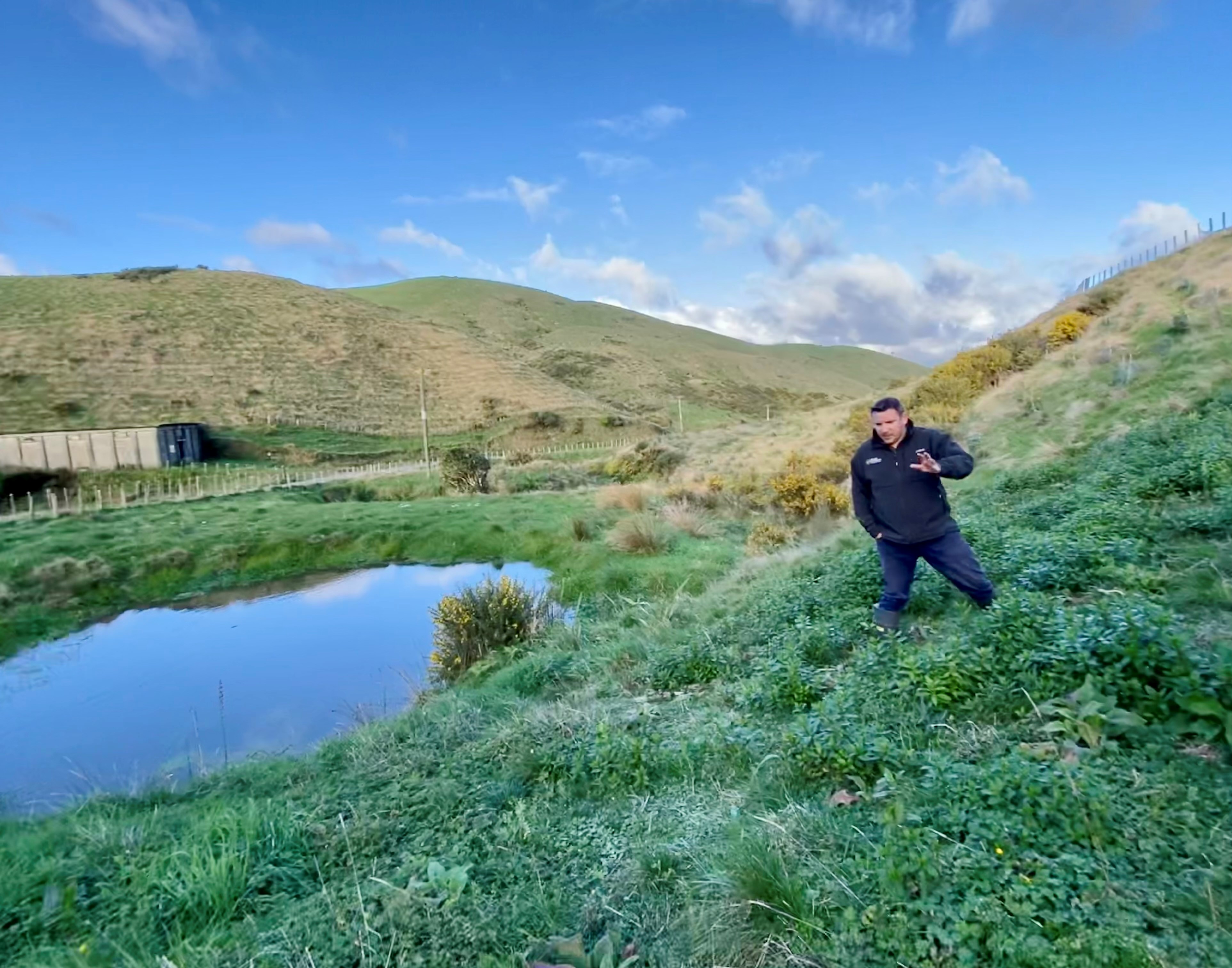 |
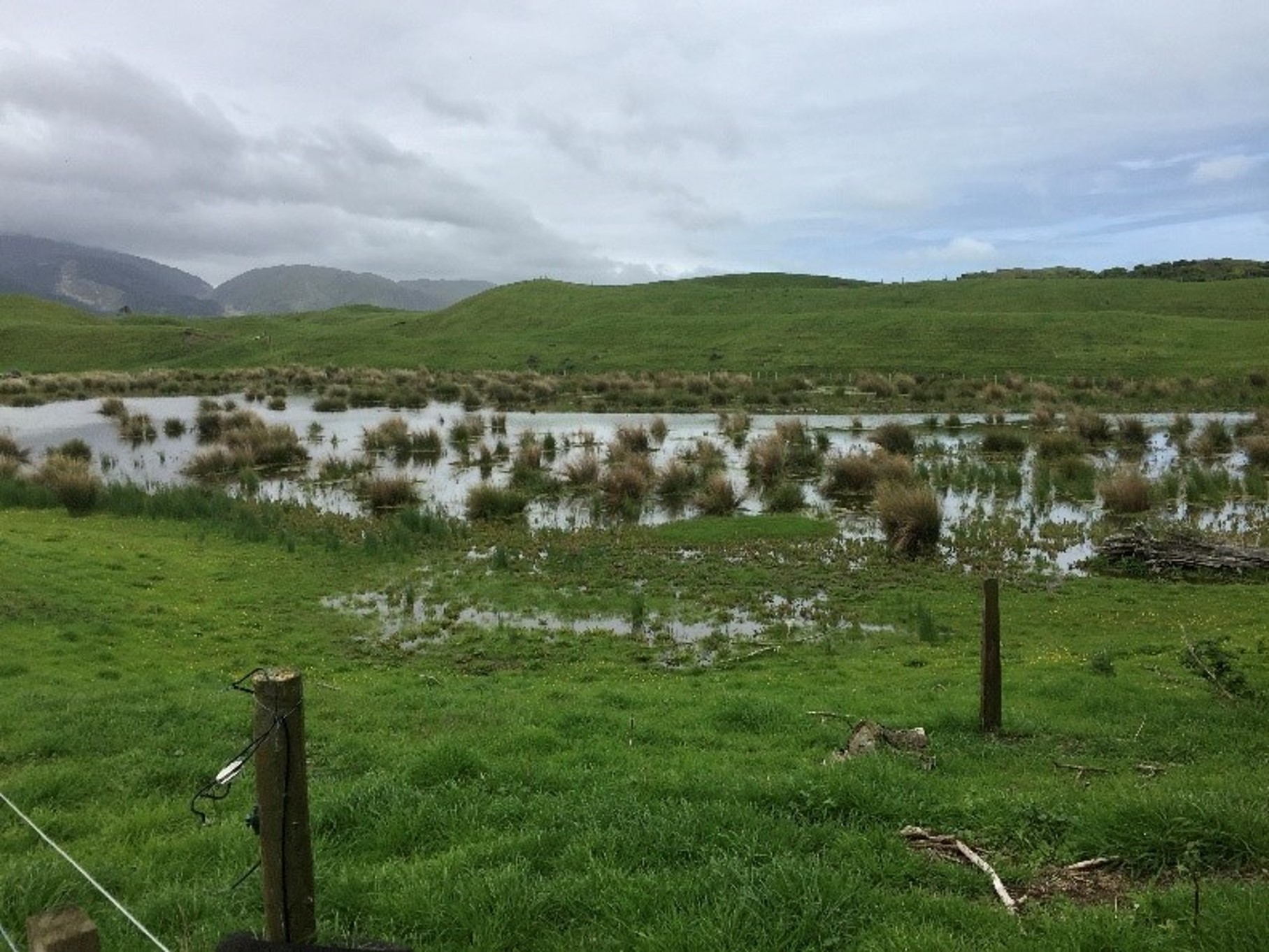 |
| Hill Road Belmont Stream area restoration plantings, done through a direct seeding trial. | Wetland areas were grazed by stock and horses in Queen Elizabeth Park for many years. These freshwater areas are now protected, and remaining pony club horse grazing is limited to non-wetland areas and lower slope dune lands. |
Mauri Tūhono
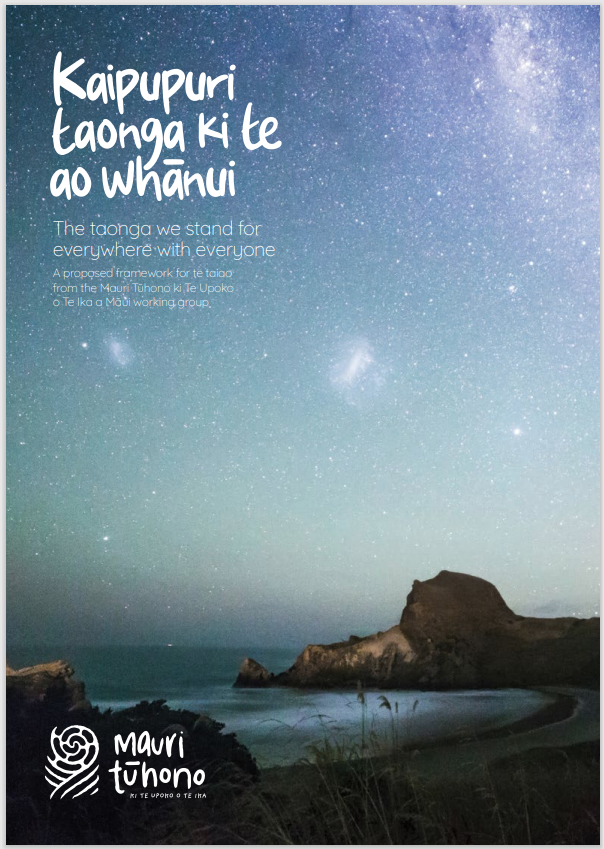 Mauri Tūhono (The Treasure we Stand for Everywhere, with Everyone) is a framework in the Wellington region for ‘sustaining and restoring the mauri of te taiao and people through entwining our efforts’. It was developed by the independent Mauri Tūhono working group, sponsored by Greater Wellington.
Mauri Tūhono (The Treasure we Stand for Everywhere, with Everyone) is a framework in the Wellington region for ‘sustaining and restoring the mauri of te taiao and people through entwining our efforts’. It was developed by the independent Mauri Tūhono working group, sponsored by Greater Wellington.
The framework is deeply interrelated with the Recloaking Papatūānuku programme.
People - He rau ringa e oti ai (many hands make light work)
The work of mana whenua and local community groups is essential to successful park restoration outcomes and Greater Wellington is extremely grateful for their enduring work and drive. Greater Wellington is actively working towards a partnership approach to restoration in regional parks with Ngāti Toa Rangatira, Taranaki Whānui and Te Ātiawa ki Whakarongotai and we’re developing restoration plans alongside these iwi.
There are volunteer groups that focus on a broader catchment wide restoration vision including Ngahere Korowai, organising the Eastern Porirua community to connect with Belmont Regional Park through planting days and other activities. At QEP/ Whareroa the Rongoā Collective of the A.R.T. (Ātiawa Raukawa Toa) Confederation are supporting restoration work with new plantings in the park and connections beyond.
In other areas community nurseries are active providing plants for community plantings, including MIRO (Mainland Island Restoration Group) at East Harbour Regional Park, the Queen Elizabeth Park Nursery groups, Forest and Bird at Wainuiomata Regional Park, and Friends of Maara Roa in Belmont, amongst others.
 |
| Wetland margins are key sites for restoration plantings. |
The vision for restoring healthy ecosystems in parks is long term, and the aim is full recovery. It takes many years for native forests to reach maturity, but the good news is that benefits start being delivered as soon as high impact activities end in parks. The overall regional park network comprises 33,000 hectares of land. In 2020 when the Toitū Te Whenua parks plan was adopted by Council with new policy directions to phase out grazing, approximately 2000 hectares of park was grazed with stock and horses. In 2023 it's approximately 1000 ha in Belmont and 100 ha at Battle Hill, and a further 200ha across parks with pony club grazing. Horse grazing continues where it is directly associated with recreation activities and important park values are protected such as wetlands.
The restoration programme is focused on the formerly grazed areas of parks. These areas have the poorest ecosystem health and the least recreation use, which means less benefits for the community. The parks restoration programme is focused on these parks:
- Baring Head / Ōrua-pouanui, East Harbour – where grazing ended in March 2023.
- Battle Hill – where the focus is wetlands, spring and waterway protection and new bush corridors connecting existing fragments. Horse grazing and lower-impact related grazing supporting ‘farming education’ experiences will continue.
- Belmont – which is the largest restoration area. Grazing ended in the western part of the park in 2022 and is phasing out in the eastern areas before ending in January 2026.
- Kaitoke – where the formerly grazed top terrace is being restored with native vegetation.
- Queen Elizabeth Park – where grazing ended in December 2020 and the focus is now wetland and duneland natural recovery and restoration.
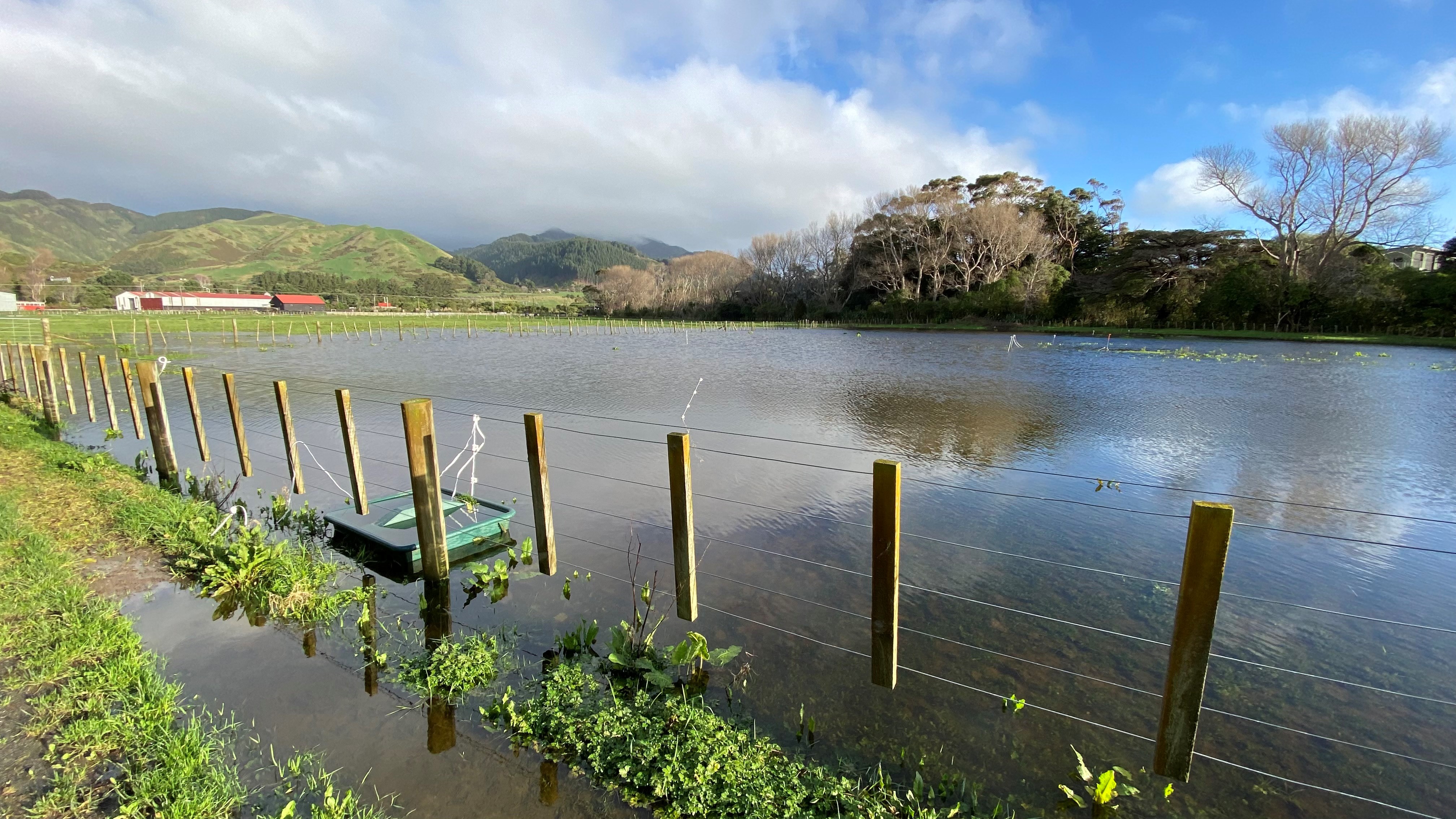 |
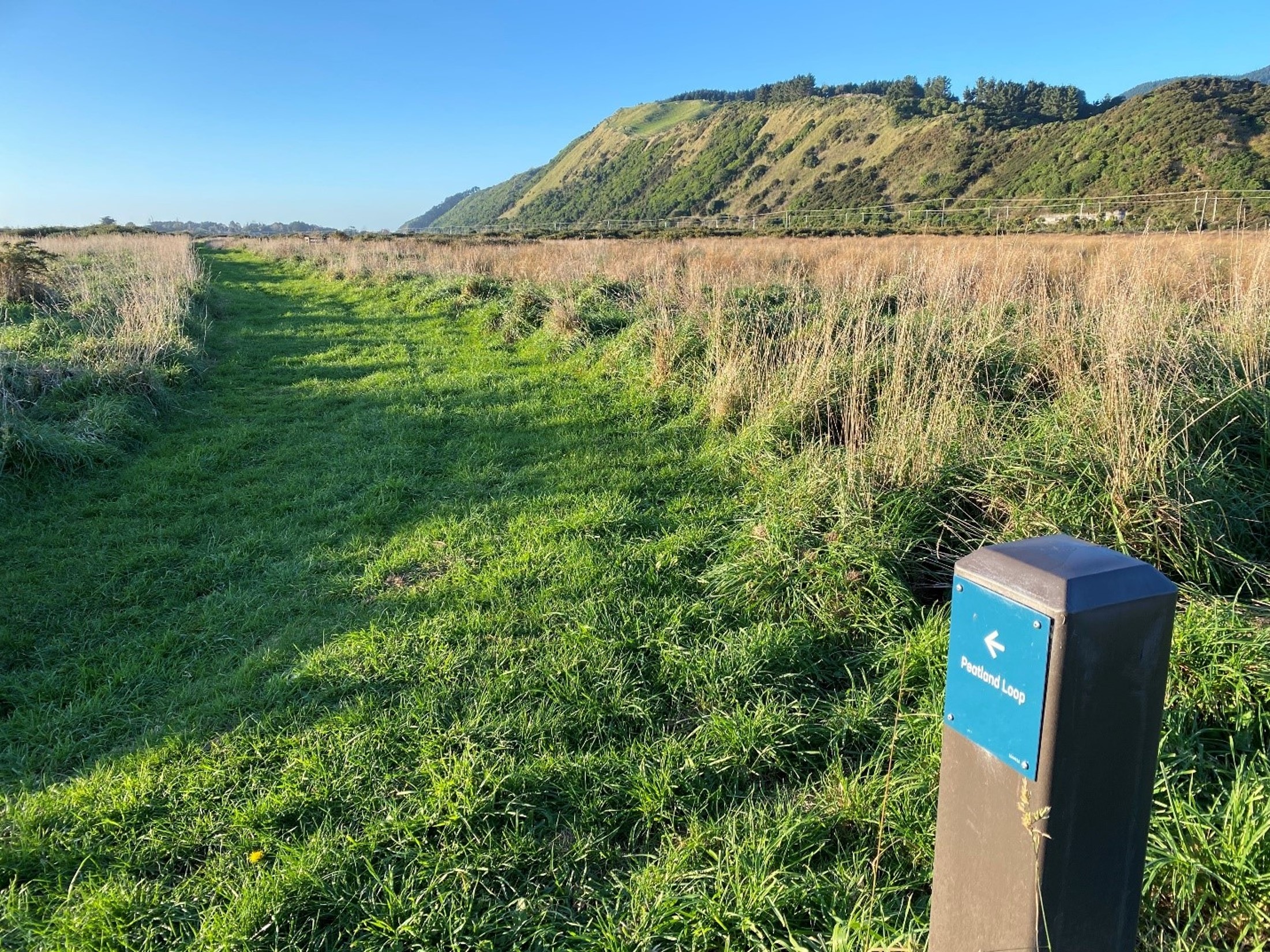 |
| This area of QEP to the north of the plant nursery was previously part of a horse trekking business grazing area. Greater Wellington scientists have classified it as wetland, and it’s now scheduled for restoration plantings in 2023/24. | In the short term where tracks are required in restoration areas, the area will not be planted and mown. As resources become available the track area may be upgraded to a gravel surface. This peatland track in QEP may cease to be a track if water levels rise significantly with wetland restoration. There are higher areas along the top of dunes where tracks can be maintained. |
Native forest and wetland restoration involves the recovery of a native area (ecosystem) that has been degraded or damaged. Restoration works in Regional Parks includes new plantings for restoration of forests and wetlands, works to support planting success by reducing pest plants and animals and the seasonal threat of fire. Planning works such as hydrology studies in parks with extensive wetlands are also included in Greater Wellington’s restoration programme.
Toitū Te Whenua Core Park Values identify provide guiding directions, along with policies. There are many core park values related to the park’s restoration programme (in Section 4, page 38):
- Where the environment is degraded, we focus on restoration, prioritising high quality freshwater, protection of wetlands and rare ecosystems and work to minimise threats and impacts
- We prioritise achieving high-quality freshwater and work to minimise threats and impacts
In the face of ongoing climate change, we work to build ecosystem health and support resilience
Restoring parkland previously grazed by stock increases the health and quality of freshwater streams, wetlands, rivers and inlets. A lack of vegetation, particularly streamside (riparian) reduces fish spawning habitat and causes streambank erosion. This then increases sediment in waterways and affects the functioning of aquatic species. Riparian planting is an effective method to mitigate sediment, pathogens, and excess nutrients.
Farming activities make ongoing contributions to the sediment load in water catchments, especially on steeper slopes. Stock access to waterways and overland flow path through grazed paddocks is one of the main routes for E. coli (from stock dung) to enter waterways. Macroalgae blooms occur when there is excess phosphorus and nitrogen in waterways. Macroalgae blooms have a range of adverse effects: reducing light for desirable species, smothering shellfish beds and other desirable species, and depleting sediment oxygen.
Restoring headwaters of streams and the wetland gullies that contribute to them has downstream benefits across the park’s catchments, to streams through residential areas, to the Te Awarua-o-Porirua and Te Whanganui-a-Tara harbours.
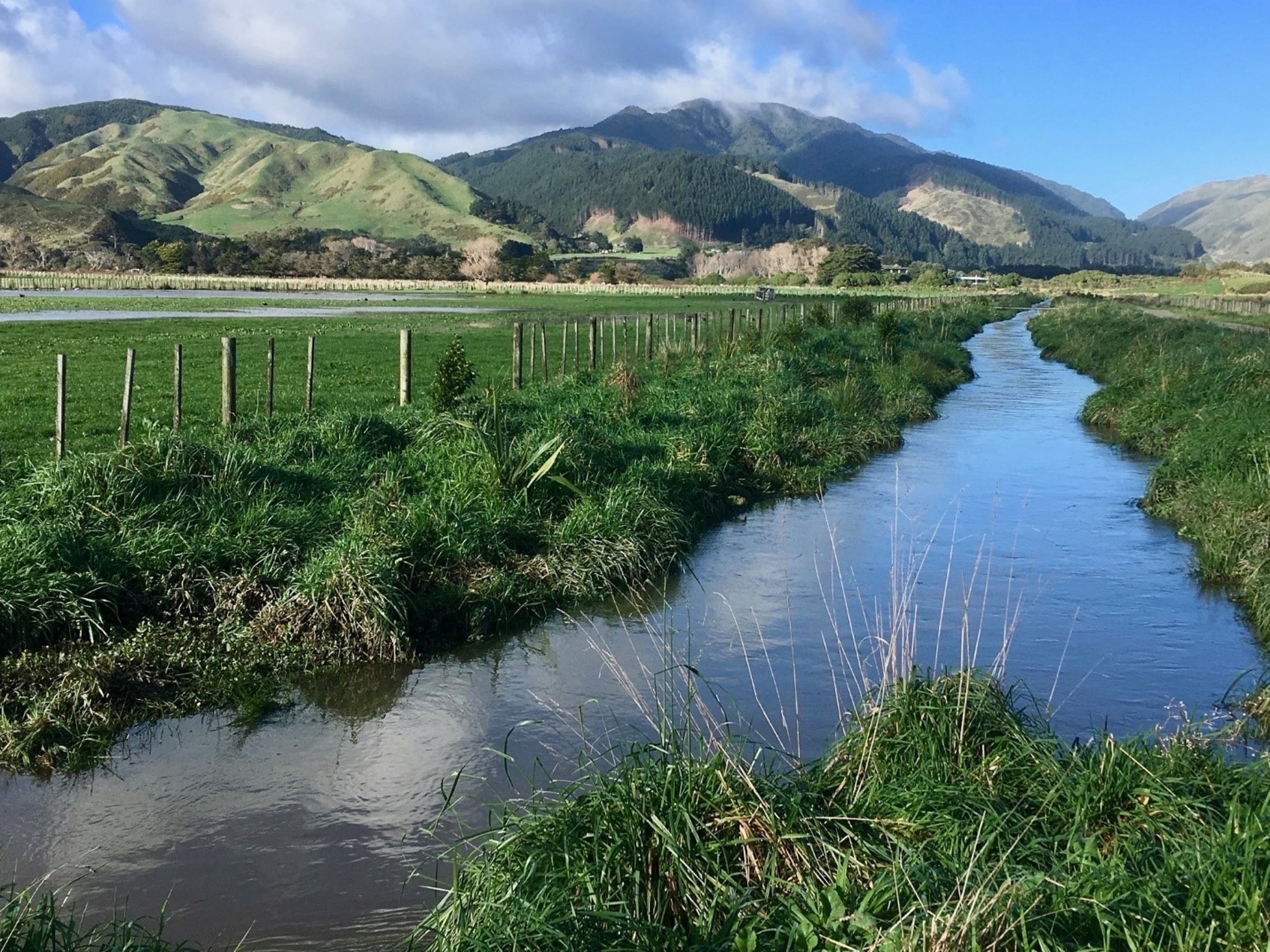 |
| Te wai te ora (water is life). Wetland areas of Queen Elizabeth Park and all stream areas have now been retired from stock and horse grazing. Internal park fences are being removed and wetlands are restoring through both natural and assisted restoration approaches including the Recloaking Papatūānuku programme. |
I orea te tuatara ka patu ki waho (A problem is solved by continuing to find solutions)
The overall approach in co-design with mana whenua is depicted as a journey of restoration to achieve healthy ecosystems for the benefit of people and nature (Toitu Te Whenua vision).

Planning for restoration involves many steps. Practical planning steps include:
- Establishing a partnership approach with mana whenua and identifying opportunities for community collaborations and support. The work is long term and requires commitment.
- Identifying different park biophysical environments, mapping natural and cultural values and utilising reference ecosystems where little native vegetation remains in some areas of park.
- Identify the aspirations or what the restored landscape goals are in restoring areas of park. The Singers and Rogers Classifications of New Zealand’s ecosystems are commonly used as goals.
- Embedding ‘Māramatanga, what we know to be true’. ‘Kaitiaki responsibilities of mātauranga Māori will be respected in accordance with the kawa and tikanga of mana whenua’ Mauri Tuhono framework guidance.
- People - Hononga (connection). Our connection to each other.
- Identifying restoration challenges including threats to success of getting plants in the ground and plant survival and success.
- Identifying pest plants and animal issues and work to be undertaken to reduce their impacts.
- Restoration priorities. These vary per park and may change as new opportunities arrive such as partnerships with others. Planning ahead is critical for seed sourcing and growing.
- Planning and delivery work to reduce the threat of fire, particularly around important assets, and where more flammable species are supporting restoration processes through succession, such as manuka/kanuka or gorse. This includes fire plans, on-ground fire break trails and operational procedures.
- Restoration methods appropriate to the place and adapting as monitoring indicates need for change (see below).
- Identifying restoration management zones.
- Support natural processes by managing towards the goals for the restoration area. Maintain plantings and manage threats.
- Monitoring is essential to track how plantings are going, where different methods are successful and and deciding where adaptations or innovations are needed.
Toitū Te Whenua Goal four is Ko te ara tahi / Mana whenua partnerships, collectively we work together in mahi tahi partnerships, as kaitiaki guardians, nurturing strong mauri and enhancing parks for current and future generations. Greater Wellington’s commitment to mana whenua partnerships in parks is embodied in core park values.
|
Ko ngā whanonga pono / Core values for parks are Section 4 in Toitū Te Whenua (page 38)
|
This goal is being put into practice by partnering with mana whenua to shape the working arrangements for jointly developing park-specific restoration plans. Mana whenua are also assisting in delivering the restoration planting and maintenance works. Detail of working relationships is being discussed and once agreed on, the process of detailed restoration plans (and park specific recreation master plans for recreation facilities and amenity areas) will commence. Encompassing mātauranga, wholistic Māori knowledge is core to the success of planning work.
Running in parallel with mana whenua partnership-driven planning work, as kaitiaki, there will be many opportunities in restoration programme delivery on the ground in parks. Park based nurseries are also being considered.
 |
| Taranaki Whānui planting at Parangarahu Lakes, East Harbour Regional Park |
Community participation opportunities
Many years and hours of restoration work has been taking place in regional parks by community group volunteers with the support of grants, central Government funding and other resources. This work is highly valuable and continues. The Recloaking Papatūānuku programme will identify further opportunities for local community collaborations as park-specific plans are developed.
Find out more about the many community groups working in parks.
Community groups wanting to undertake work at particular parks can email us at parks@gw.govt.nz.
 |
 |
| Kanuka ‘hardening’ to the Belmont conditions in the big shearing shed car park on Hill Road. They will be planted as part of community group restoration work near the Kilmister Track. | The right local plant, in the right site, at the right time, supports restoration success |
There are many different principles and approaches to restoration - every site is different! The Wellington region ecosystems are unique to the location, microclimates, terrain, and soil types.
The Greater Wellington Restoration Planning Guide (PDF 2.2 MB) outlines principles and practices of restoration techniques.
The purpose of the Recloaking Papatūānuku Restoration Guide (referred to hereafter as Restoration Guide) is to guide the phased retirement of grazed land in Greater Wellington’s regional parks and to…
Read more here
date_range
Published 20 Jun 2023
He Aratohu Whakahauman Papa | Regional Parks Restoration Guide


What does this guide tell us? It has six guiding principles. The principles from these two guides are combined here as a general reference.
This table is a summary of the most useful parts of each guide:
People are key to restoration success. Mana whenua partnerships and community restoration work provide wellbeing and practical opportunities to connect and delivery benefits together. Volunteer involvement helps sustain projects in the longer term.
| Restoration principle | This means |
|---|---|
| Identify the restoration goal | This Department of Conservation PDF is the ‘gold standard’ reference for original ecosystems prior to land clearance is ‘A classification of New Zealand’s terrestrial ecosystems’ guide by Nicholas J.D. singers and Geoffrey M. Rogers (2014). This is the target towards which park restoration efforts are aimed, and against which progress can be monitored. |
| Identify and address threats | Manage pest plants, animals, and human activities. |
| Protect and manage what you have |
Support existing bush and wetlands and expand from here. Connect native bush areas may be the priority in some parks. Integrating science, mātauranga Māori knowledge and practice. |
| Let nature take its course | Allow natural processes of seed dispersal through wind, rain, and birds. or wetlands to recover from existing seed sources |
| Identify and prioritise barriers to regeneration and succession |
Barriers are opportunities to adapt and try different approaches. Pest animal or plant management may be significant at some stages of restoration |
| Site by site considerations |
Every place is different. Match your restoration technique and intensity of them to the level of degradation at the site. Where there is little vegetation ‘community structure’ left, elements can be reintroduced to support restoration success (such as logs, or fast-growing species which attract birds). |
| Eco-source from local plants and ‘eco-siting’ |
Eco-sourcing local seed helps keep new plantings consistent with the natural character of the local area. ‘Eco-siting’ means trying to recreate the same ecosystem that used to exist in an area. Eco-sourced seed and plants are well-adapted to the local climate and soils. They are more likely to survive and flourish. All native restoration plantings in the recloaking Papatūānuku programme are eco-sourced. |
| Avoid ‘unwanted natives’ |
Where ‘ecological integrity’ is the priority at a site, then some non-local native plants can be a threat to this. Some native plants with benefits such as fast growth, hardiness and drought resistance, can become weed-like and dominate an area of park. Two of these technically non-local native, weed-like species in the wellington region are karo (pittosporum crassifolium) and pōhutukawa (metrosideros excelsa). Their seeds are spread by wind, rain and birds and they been widely planted for shade, bird nectar or as attractive avenues of street trees. They have formed self-sustaining populations and exclude some of the more highly valued local tree species. |
| Ecosystems are dynamic | Change is constant, new threats emerge as ecosystems being to recover, native species reappear and recover at different rates. |
| Monitoring is key | To support adaption, know what works and doesn’t, monitor recovery, identify and new threats. Adaptation, trial, and error is required. |
Reflecting the differences in each park in original vegetation, soils, microclimates, terrain and restoration needs, Section 11 in the Recloaking Papatūānuku Guide outlines some of the options for park-specific approaches to restoration.
Broadly, restoration options include:
- Supported natural processes regeneration e.g. with management of pest plants and animals. This works best where there is native vegetation nearby providing good seed source distribution from birds, wind and water e.g. Kaitoke, parts of Belmont.
- Mass plantings of establishment (pioneering) species by hand or direct seeding. Avoiding dominance of flammable species, particularly adjacent to park boundaries and neighbouring properties, where ‘green fire breaks’ of less flammable species are best.
- Plantings of species suited to achieving ‘fast carbon sequestration’ e.g. species that grow fast to a particular height.
- Patch or connectively plantings in key areas to provide establishment seed sources. These can also be meandering row plantings to create ‘biolinks’ or corridors for wildlife.
- Infill and enrichment planting e.g. understory, secondary species plantings.
- Wetland restoration. There are many different types of wetlands in parks. Wetlands include ‘permanently or intermittently wet areas, shallow water, and land water margins that support a natural ecosystem of plants and animals that are adapted to wet conditions’. In QEP there extensive areas of peat soils and former wetlands which have been drained as part of the farming legacy. Restoring these to health requires specialist approach with considerable hydrological mapping and wetland specialist work. In Belmont there are unique hilltop wetlands and many damp gully wetlands which are easy to spot in summer when the grazed areas of park are dry.
- Selective non-native plantings or non-endemic native plantings to support establishment of native region plantings e.g. shelter plantings, plantings for birds to flourish and help distribute seeds e.g. tree lucerne or karaka in QEP for kereru, winter flowering plants for tui food when NZ natives are not flowering.
- Planting for wildlife restoration. Restoration planting using a broad selection of plants will eventually attract and provide habitat for a range of birds such as kererū, fantail and tūı and kaka, particularly if the site is near existing bush. Planting non-native, non-invasive species that birds love to feed on, along with slower growing natives can be a useful tool to assist wind and bird dispersal of seeds to help assist natural regeneration processes. Birds need year-round food supplies and low predator numbers during nesting. Reptiles and invertebrates also thrive in forest fragments with low pest numbers and plenty of moist soil, rotting logs, and thick leaf litter. You can help birds and lizards survive and thrive if you live near a park and own a predatory domestic animal. Birds will thank you, and your animals such as cats will be safe from pest animal baits and traps if they are looked after within home enclosures such as a ‘catio’ attached to your house. If you have the good fortune to live near a park you also can support park restoration by planting species that birds love to feed on, or consider a wildflower meadow instead of mown grass to attract bees and insects. Fish recovery in streams is supported by shade plantings to cool water and provide habitat, and with aquatic weed management work.
- Plant community structure establishment. Where little native vegetation remains, it can be helpful to intervene to help nature by reintroducing structure such as fallen logs, reopening, or closing water ways to support wetlands, boulders for lizard habitat. There are many options and opportunities to innovate.
- Planting for human harvest. Some types of plantings are outside the scope of the restoration programme but are a key consideration in park master planning. This includes plantings for harvest such as Rongoa species, pa harakeke, fruit trees, labyrinth or sensory gardens, exotic plantings for shade or other purposes. Many regional parks are (Reserves Act) recreation reserves which allows for these types of plantings.
- Threat management for success of plantings. This is essential in most areas of parks. There are many pest animal species ready to eat freshly planted natives, or exotic weeds which may smother slower growing natives. See the next section for more detail about threats.
 |
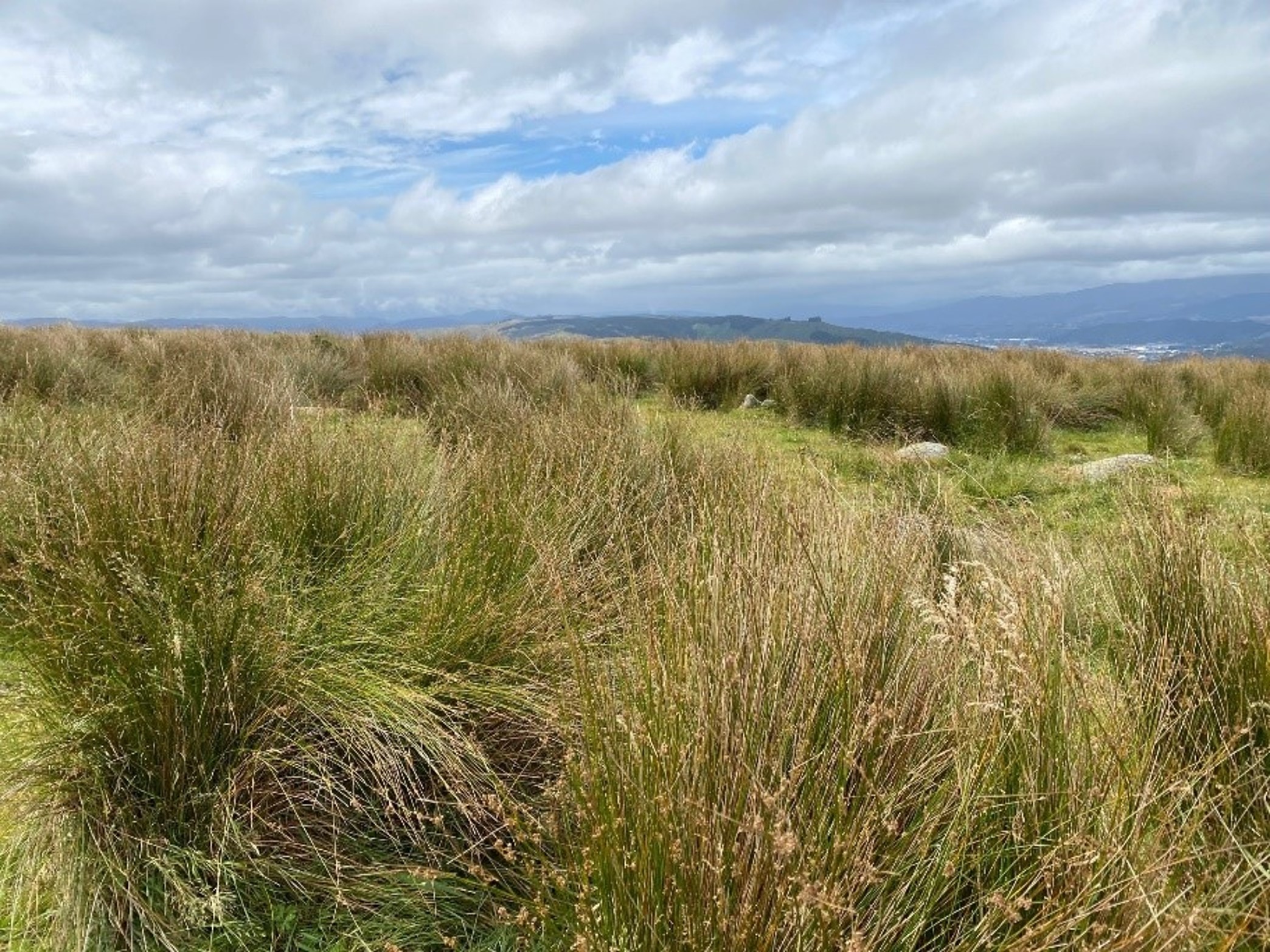 |
 |
| Helicopter assistance lifting plants closer to sites for planting makes work much easier in parks such as Belmont with its steep and currently wind-swept terrain. | The Belmont Regional Park wetland on the top of Boulder Hill amongst the boulder field is an unexpected surprise for many parks visitors. While this area is still stock grazed in 2023, wetlands are a priority for future restoration work. | The return of native birds is a huge reward for conservation work. With a lot more mahi, one day everyone in the Wellington region may be able to experience the joy of kaka and many other native bird visitors to their backyards. Ongoing management of threats is key. |
If you live near a park or a place where birds are breeding, consider pest animal trapping and take action to keep your domestic animals (such as cats) contained so they can't roam and prey on birds. A mesh 'catio' attached to your house is an easy way to do this. Unaccompanied domestic animals are not permitted in Regional Parks (refer Toitū Te Whenua Plan Rules).
Protecting existing areas of bush and wetland and the biodiversity values they already hold, helps ensure that these areas support establishment of new planting areas (with seed spread, birds etc.). Supporting existing regenerating areas with pest plant and animal control, helps to establish more biodiverse ecosystems. New plantings can easily be lost to pest plant invasion and pest animal browsing. Ecological threats in regional parks include pest plants, pest animals and seasonal fire risk.
Greater Wellington’s management of pest plants and animals is guided by the Regional Pest Management Plan (2019). This Plan is long term (20 years) and identifies pest animals present in the region and strategies for their management including exclusion, eradication, progressive containment, sustained control and site-led control. The strategy chosen for a particular pest species depends on its potential impacts and also the degree to which it is established in the region.
Pest plant, animal and fire threat management are a core part of the parks restoration programme. Threat management for pest plants and animals is broadly addressed in the Recloaking Papatūānuku Guide. Park-specific restoration plans to be developed will provide more details.
Pest Plants
Pest plants threaten the success of new plantings and existing areas of native vegetation and waterways in a number of ways. They can:
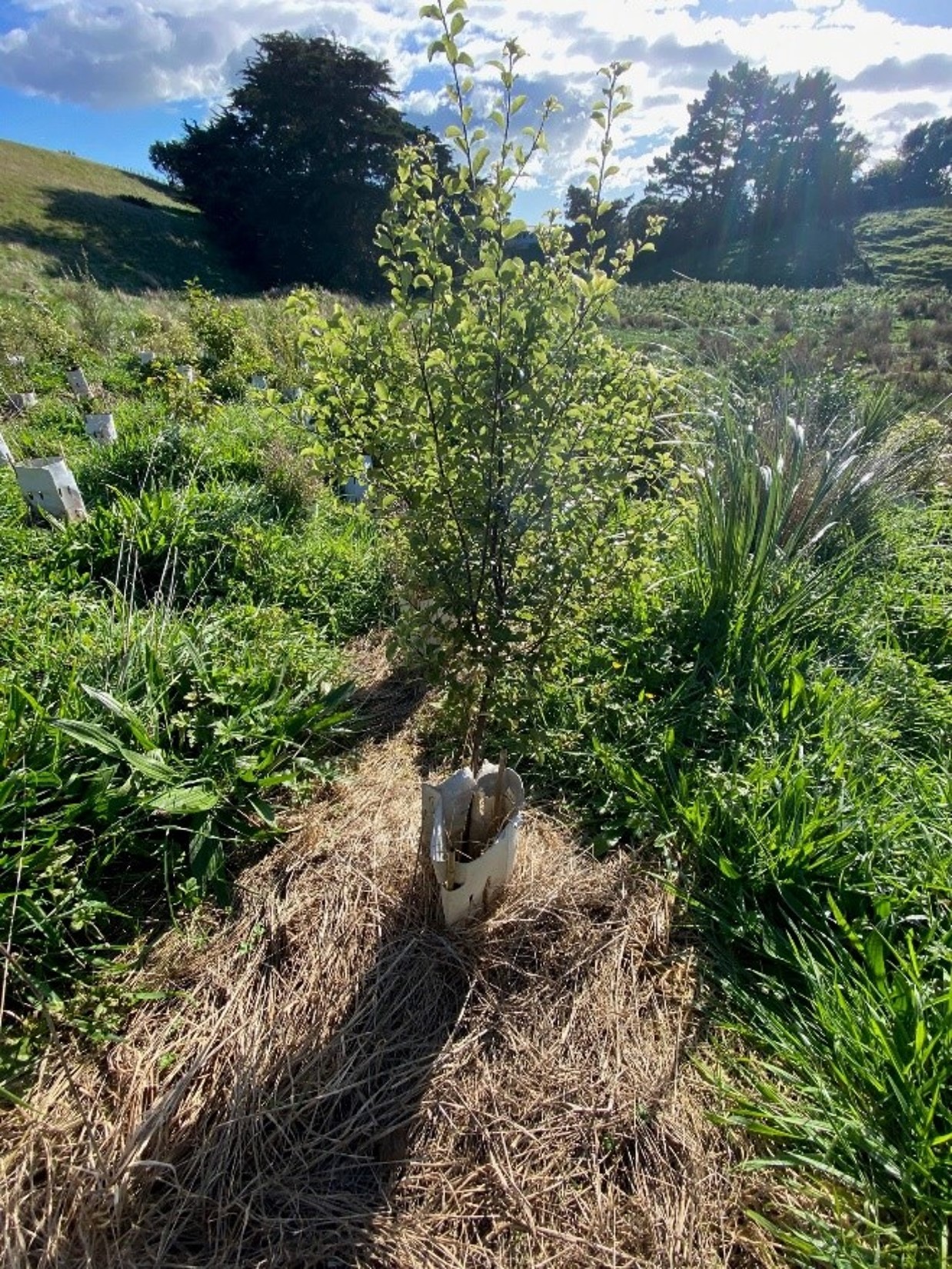 Prevent the establishment and growth of new plants by smothering.
Prevent the establishment and growth of new plants by smothering.- Interrupt natural processes of succession and regeneration by growing faster and more prolifically than native species.
- Interrupt cultural uses and values, e.g. use of native and introduced species as rongoā Māori.
- Increase track maintenance requirements in the short to medium term until natives become well-established.
- May effect carbon accounting and sequestration e.g. if pest plants lead to a persistent cover of nontree species.
- Increase fire risk e.g. gorse, for a period until they are overgrown by natives or actively managed.
The Recloaking Papatūānuku Guide identifies that ‘the strategy chosen for a particular pest animal species depends on its potential impacts and also to the degree to which it is established in the region (its position on the “invasion curve”). A native ecosystem weed (or pest plant) is defined as ‘an exotic plant species that poses considerable risk to the integrity of native ecosystems’ (PCE 2021, p 28)’. See Section 4 of the Guide for details about pest plants.
Not all non-native plants are a weed or pest plant in regional parks. Many provide amenity values and are part of a park’s heritage, such as oak tree plantings at Battle Hill and the gum trees (Gums picnic area) at Wainuiomata Regional Park. Others, such as macrocarpa can provide important shelter and bird nesting habitat if they are key parts of vegetation fragments. Provided a species does not seed prolifically and it offers habitat value, it can be left to naturally senesce (decline) and return to soil offering nourishment to Papatūānuku (mother earth).
Pest animals
Greater Wellington undertake direct control of pest animals in parks, Key Native Ecosystem areas and will also be undertaking pest animal management in park restoration areas which are part of the Recloaking Papatūānuku programme. In the Regional Pest Management Plan, pests are managed included under four programmes:
Exclusion – to stop them getting into a new area e.g. wallabies
Eradication – to remove them from the region over time e.g. rooks
Sustained control – to help reduce spread e.g. rabbits
Site-led programmes – to exclude them to protect identified vulnerable places (such as restoration plantings) e.g. rats, possums, cats, mustelids (ferret, stoat and weasel), goats, deer, hedgehog
All of these species impact negatively on plant growth and native vegetation regeneration which reduces the rates of success of plantings and the biodiversity values of existing bush fragments and established areas.
Refer to the Recloaking Papatūānuku Guide for more details.
He Aratohu Whakahauman Papa | Regional Parks Restoration Guide

The purpose of the Recloaking Papatūānuku Restoration Guide (referred to hereafter as Restoration Guide) is to guide the phased retirement of grazed land in Greater Wellington’s regional parks and to… Read more here

date_range Published 20 Jun 2023
Download now (PDF 23 MB) get_app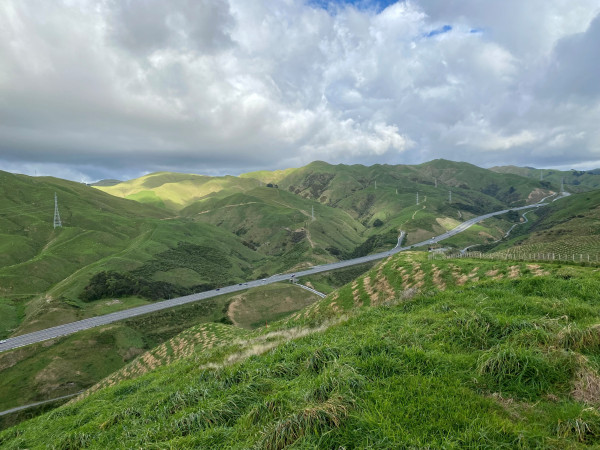 |
 |
| Rabbits and hares thrive in open grassy areas, but they make a great lunch for Karearea (native falcon). A falcon was spotted hunting rabbits above the restoration plantings in Belmont beside the motorway. | |
Fire threat
Dealing with seasonal fire risk, including human behaviour, is a key component of threat management. Major fires have the potential to setback restoration benefits and damage existing ecological values. Fires in parks can also threaten neighbouring residential areas and park facilities. In New Zealand, more than 98% of wildfires are caused by people rather than natural sources such as lightning. Common ignition sources include cooking equipment, beach fires, vehicle fires and the use of machinery (Teeling T 2021a).
As grazing concludes in regional parks, Greater Wellington is developing fire threat management plans for each park to support restoration work and longer-term operational response. This includes new fire break trails, no fire lighting signs where there is a history of people lighting fires in or close to parks e.g. Raumati Beach, Wainuiomata Coast Road car parks. Fire threat is reduced as native vegetation restores and reaches maturity. The best long term approach to fire threat management is restoration of native bush, wetlands and the riparian areas of streams, and ongoing information to discourage people from lighting fires where they are not permitted in regional parks. Refer to the Recloaking Papatūānuku Guide for more details.
He Aratohu Whakahauman Papa | Regional Parks Restoration Guide

The purpose of the Recloaking Papatūānuku Restoration Guide (referred to hereafter as Restoration Guide) is to guide the phased retirement of grazed land in Greater Wellington’s regional parks and to… Read more here

date_range Published 20 Jun 2023
Download now (PDF 23 MB) get_app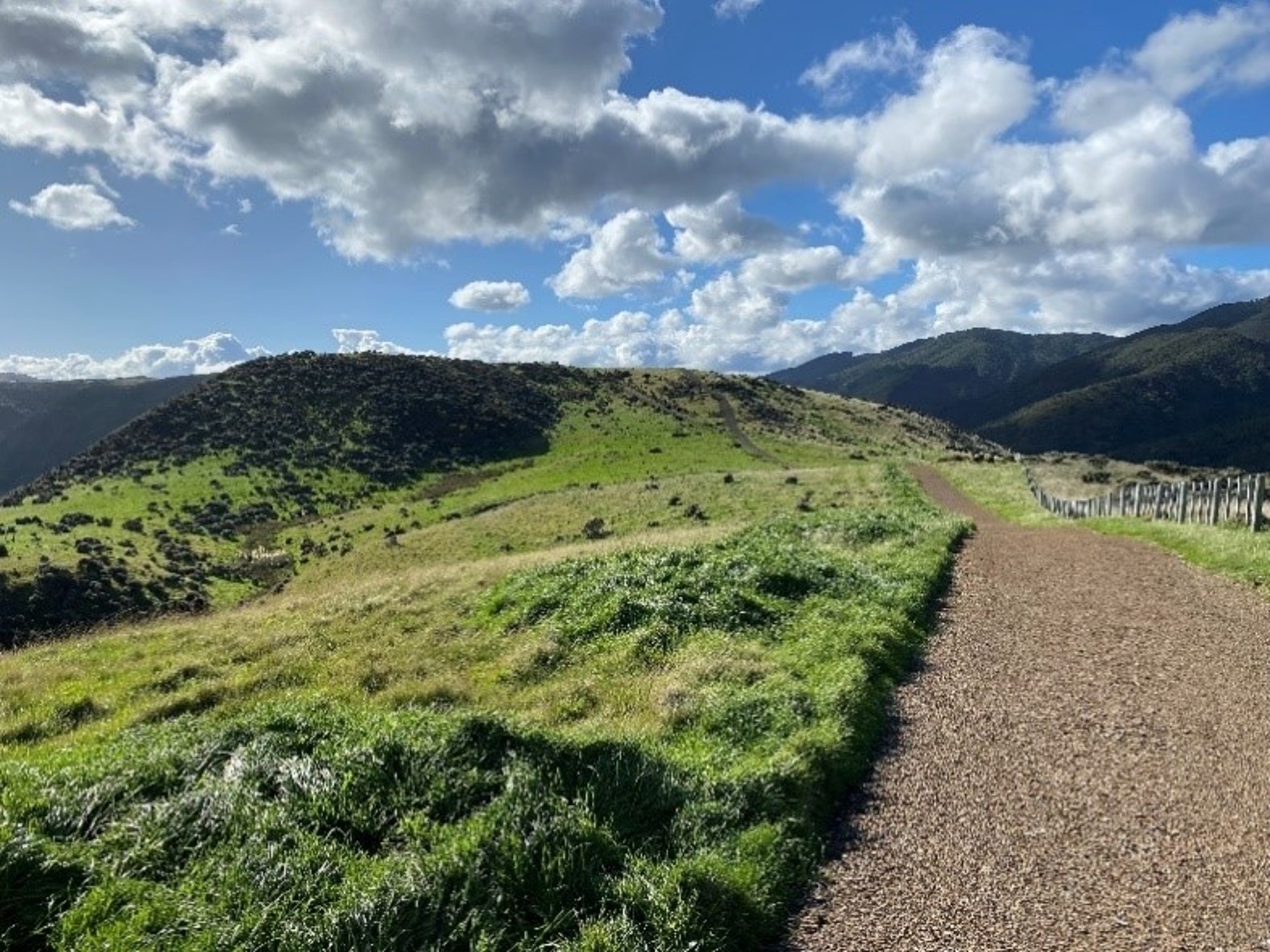 |
| The ridge-top fire break track at Baring Head/ Orua-poauni is also a walking and riding trail. It provides great access for everyone. Fortunately this park is very close to Wellington airport for rapid firefighting response, should emergency response be required at any time. |
Baring Head/Ōrua-pouanui, East Harbour Regional Park
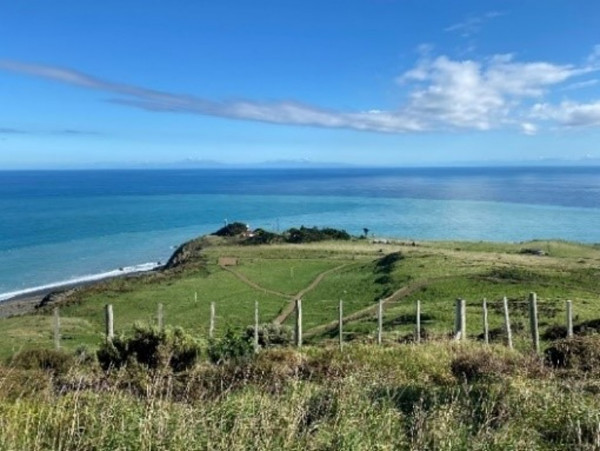 |
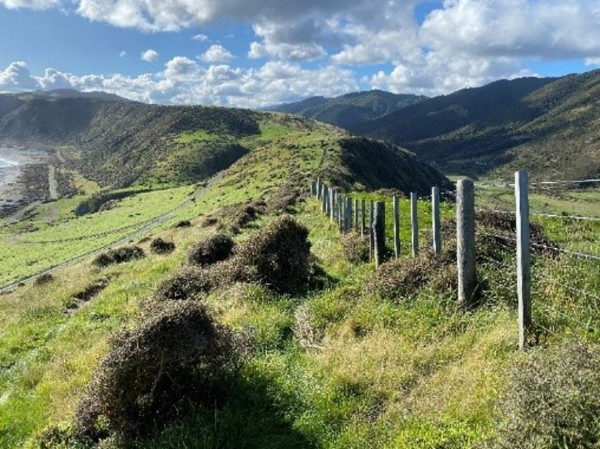 |
 |
| Baring Head/Ōrua-pouanui escarpment and the new fire break walking and cycling track which offers panoramic views. Grey scrub and other original bushwill be restored here, supported by pest plant and animal management work. | ||
Stock grazing ended at Baring Head/ Ōrua-pouanui in March 2023. Prior to this, a Fire Threat Management Plan was developed and is being implemented. There is a new fire break trail along the escarpment ridge, and a vehicle path from the Trig to the eastern side of the lighthouse complex where there is a new car park. The car park also serves as a helicopter landing spot which in future will service overnight visitors to the park cottages currently in the process of being restored. The track provides easy walking, bike and horse riding with expansive views. The fence along the ridge will be removed and improve access for views of the Wainuiomata River.
The overall planting strategy here is to:
- Prepare for restoration plantings including pest plant and animal control work, then further work to support planting success rates.
- Undertake planting of fast growing and robust species to suppress grass, help reduce grass fire risk and provide shelter and shade.
- Progressively undertake enrichment plantings which include a wider range of species as suitable habitat becomes available. Infill plant along the Wainuiomata River valley.
- Reduce the threat to plantings from stock incursions from neighbouring properties by improving fences and rapidly removing stock that enter the park.
- Support plantings and natural processes of regeneration with a focus on wetlands including the terrace top seepage area and gullies.
- Support recreation experiences by avoid planting key view viewpoints and recreation activity areas such as the southern cliff top paragliding launching area.
- Plant ‘green fire breaks’ along the Wainuiomata Coast Road boundary as per the Fire Threat Management Plan and reminding park visitors with signage to not light fires on the beach.
- Plant wetlands on the terraces and in gullies with appropriate wetland species.
Restoration work at Baring Head / Ōrua-pouanui is supported by the Hem of Remutaka, Friends of Baring Head, MIRO, the Million Metres programme and others. See the restoration planting details.
Species planted will be eco-sourced according to Greater Wellington’s policies, and include species selected from nearby regenerating and established native vegetation areas.
Battle Hill
The focus of restoration programme work here is wetland and waterway protection, bush fragment protection and enhancement through plantings and ecological links for wildlife. Areas identified as high value ecosystems and cultural heritage areas will be retired from grazing and progressively restored. This includes the parks natural springs and wetland gullies. Riding for the Disabled’s horse riding and grazing are an important community service and continue here along with many daytime equestrian activities.
Farming education activities will progressively become more of the focus as identified in Toitū Te Whenua Parks Plan which signals a shift to a ‘recreation experience focused operating model’ (Action A128). To inform this planning work, Greater Wellington scientists are mapping all the parks wetlands and areas of native habitat. This work will inform planning for future land uses and recreation experiences which are farming heritage related. Where grazing continues in the park, riparian waterway margins will be broadened to support freshwater quality (Plan Action A124).
 |
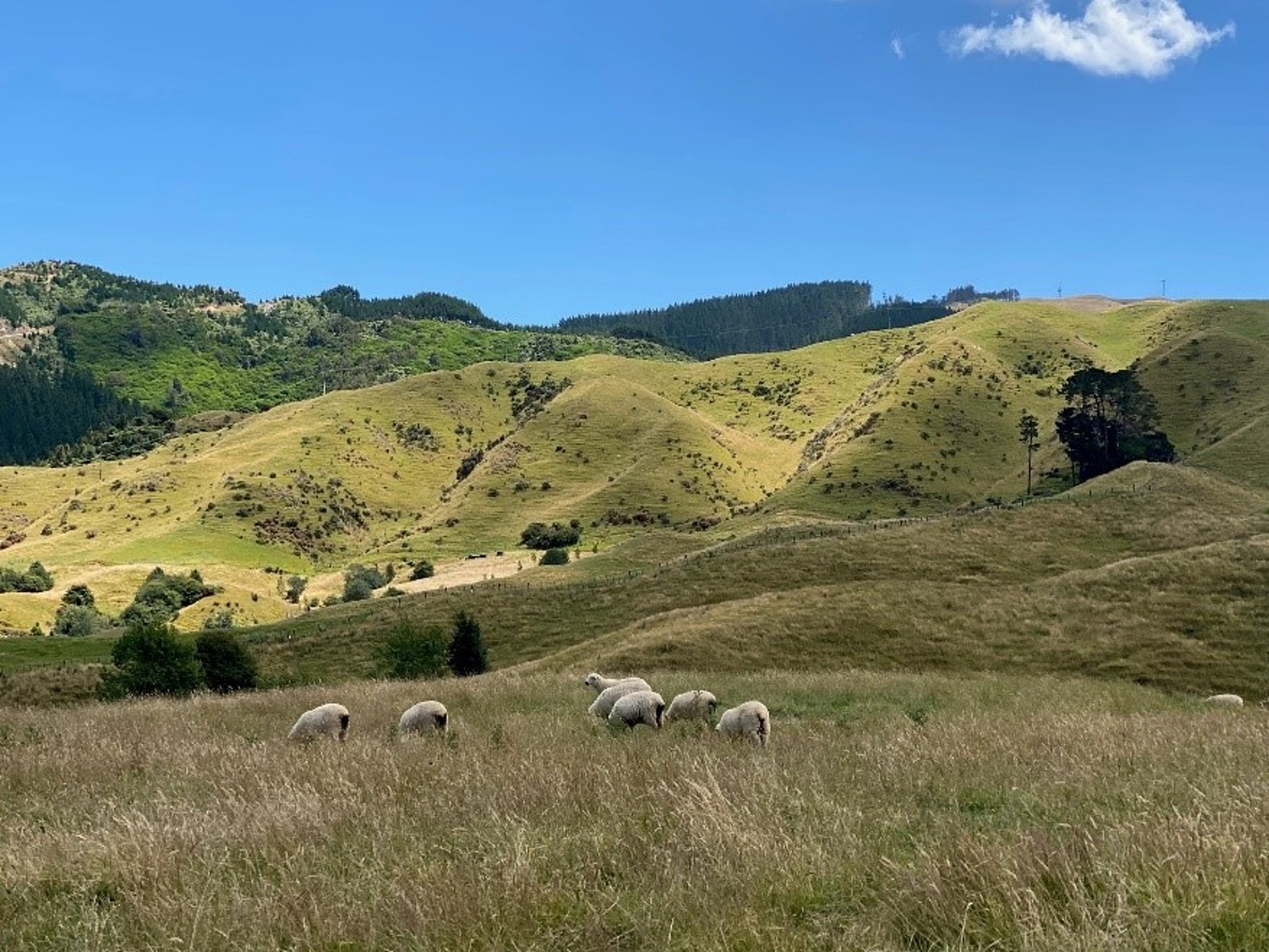 |
| Battle Hill springs areas will be further protected and restored. There are many wetland gullies and native vegetation fragments which offer ideal opportunities for protection and in-between planting connections. | |
Swampy Gully and the many gullies that feed into it are progressively being retired from grazing. In 2022 Porirua City Council partnered with Greater Wellington to restore some of this area with over 18,000 plants. See the restoration planting details.
Belmont Regional Park – West
Stock grazing ended in west Belmont Park in 2022 and native vegetation restoration works in progress. An overarching planting list of natives has been developed. This is based on the Singers and Rogers (2014) list of plants originally present here. New plantings include:
Toetoe (Austroderia toetoe), karamū (Coprosma robusta), kanano (Coprosma grandifolia), kahikatea (Dacrycarpus dacrydiodes), koromiko (Hebe salicifolia), koromiko (Hebe stricta/veronica stricta), mānuka (Leptospermum scoparium), mahoe (Melicytus ramiflorus), coastal tree daisy (Olearia solandri), lemonwood (Pittisporum eugenioides), black matipo (Pittosporum tennuifolium), totara (Podycarpus totara), five finger (Pseudopanax arboreus).
To ensure that plantings are successful, prior site preparations include spot spraying and controlling pest animals with night shooting of rabbits before and after plantings.
 |
 |
| 2022 planting of the wetland gullies near the park entrance at Waihoura Crescent in Waitangarua. | |
Monitoring is important to track success and identify where additional work is required. Monitoring plots will be established within this area. Plant survival, growth and pest animal presence will be reviewed. Photo point monitoring will also take place annually. Mana whenua and community group volunteers are helping here including Ngāti Toa, Friends of Maara Roa, Nga Here Korowai and others. See the restoration planting details.
Belmont Regional Park - East
The last large commercial stock grazing licence in regional parks is in east Belmont (east of Transmission Gully motorway). It’s scheduled to end in January 2026 and before then, as part of licence phase out, the sub-catchments which have been contributing the most nutrient and sediment to Duck Creek and Porirua Harbour will be retired from grazing and other high value wetland area such as the Boulder Hill wetland. Other high priority areas for park recreation activities and visitor safety may also be retired such as areas surrounding the cross-park route from Porirua to the Hutt Valley, and the storytelling trail past 15 bunkers at the top of Hill Road which is part of the Parks Storytelling Project.
Mana whenua and community groups are supporting restoration here including Pareraho Trust and Friends of Belmont Regional Park.
 |
 |
| The Boulder Hill wetland and bunkers easy access storytelling trail areas will be retired from stock grazing in future. As grazing ends, fences and gate barriers will progressively be removed and recycled. | |
Kaitoke Regional Park
The focus of restoration is the formerly grazed areas above the top terrace camping area. There will be a shared circuit trail on the first terrace here too (Action A290, map 19 in Toitū Te Whenua). There is great seed source from adjoining the mature native bush, so we expect to see good success with natural regeneration and a greater diversity of species from seeds spread by birds and wind. See the proposed planting details.
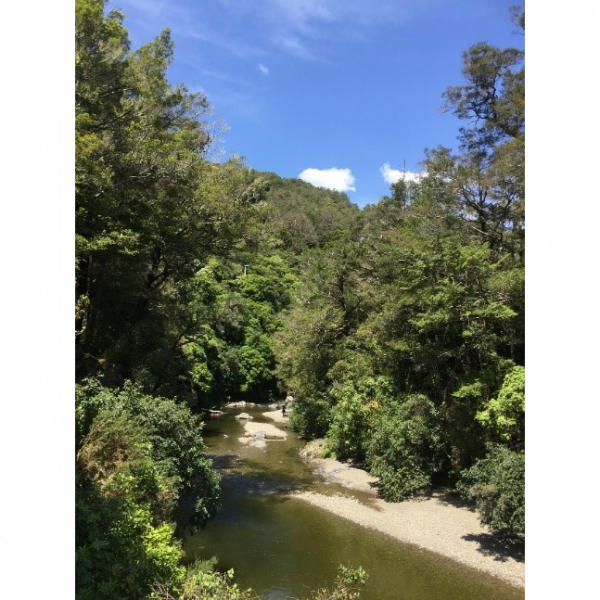 |
 |
| Most people think of Kaitoke Regional Park as mature, beautiful bush and wonderful walks through old forest. The park has formerly stock grazed areas too. The parts of these areas not needed for recreation activities such as expansion of camping are being restored via the Recloaking Papatūānuku programme. | This terrace above the camping area will be planted in the winter 2023 planting season. Reacrreation activities are important to plan for upfront so there will be a new trail for easy walking or riding around the perimeter. |
Queen Elizabeth Park (QEP)
Stock grazing ended in QEP in December 2020. This allowed full recreation access for everyone to enjoy the park, and for the natural processes of restoration to commence. Many people have reported that the speed of natural recovery has exceeded their expectations- nature has been very resilient. Wetlands are rapidly recovering, aided by two years of above average rainfall. Commercial horse grazing ended in 2022 when the grazing areas were found to be wetlands. Higher rainfall has also aided weed growth providing an additional restoration challenge.
 |
 |
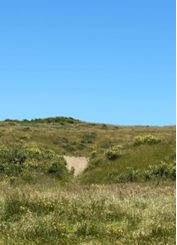 |
| A spring at Queen Elizabeth Park | The Rongoā Collective restoration area north of Whareroa Road. The Rongoā Collective are mana whenua working together using mātauranga Māori knowledge and practices | Dune erosion at Queen Elizabeth Park |
Wetland and duneland restoration is the focus at QEP. Dunelands without vegetation are subject to erosion and dune ‘blowouts’. To inform restoration work, most of the park’s wetlands have now been mapped by scientists and hydrological studies have been undertaken. Wetland areas are extensive and included a free-flowing spring which was rediscovered near the old farm track (as pictured).
QEP has the benefit of a highly engaged and conservation loving community. We are currently working with mana whenua Te Ātiawa ki Whakarongotai and Ngāti Toa Rangatira to develop spatial plans and restoration plans for the park. The restoration plan will identify priority areas and ecosystems for restoration. There will necessarily be differing levels of restoration across the park, and whilst some areas will see intensive work there will be other areas where natural regeneration will be relied upon with little input from Greater Wellington. Our plans will aim to complement the outstanding work of the volunteer groups in the park, including the park Friends group, Nursery Groups and many others. The MacLean Trust have already funded a large area of restoration plantings at the northern end of the park and this work continues.
 |
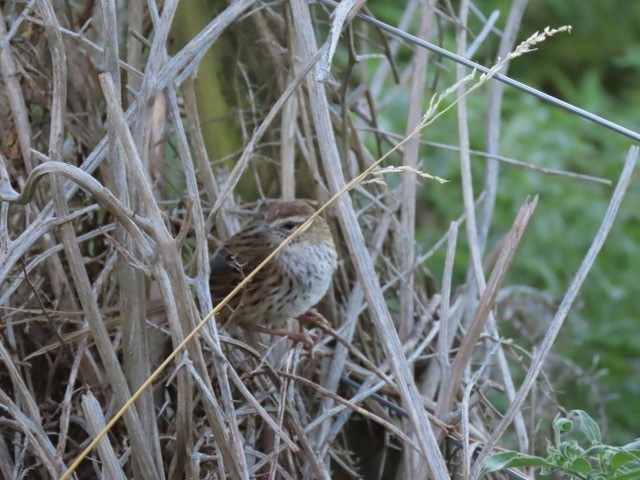 |
| QEP northern wetlands restoration works for the Friends of QEP. Photo: Rob Craven | Restoration success! Fern birds have recently naturally reintroduced themselves to the northern wetland habitat at QEP. Photo: Russell Bell |
There are many ways to support park restoration:
- Connect with your local groups. Recreation groups can help with restoration too. Check out the groups on offer.
- Planting season has multiple opportunities every year. Find out about upcoming planting events.
- Help manage pest animals. Join a community trapping group and learn the processes. Traps need re-baiting and setting and regular monitoring. We also have tracking tunnels which monitor pest animal presence.
- There are opportunities in some parks for hunting deer and pigs.
 |
 |
| Battle Hill Park has a newly formed Friends group helping with restoration of the parks many wetlands and regenerating bush areas. | Nursery groups support park restoration with local seed collection, growing, enrichment plantings, rare and threatened species work. This is the QEP Nursery Group space in the park. All the work community groups contribute to parks is immensely valuable. |
He Aratohu Whakahauman Papa | Regional Parks Restoration Guide

The purpose of the Recloaking Papatūānuku Restoration Guide (referred to hereafter as Restoration Guide) is to guide the phased retirement of grazed land in Greater Wellington’s regional parks and to… Read more here

date_range Published 20 Jun 2023
Download now (PDF 23 MB) get_appRestoration Planting: A guide to planning restoration planting projects in the Wellington region

Practical advice on planning and running biodiversity restoration projects, including site preparation and maintenance, pest control and planting. Read more here

date_range Published 31 May 2014
Download now (PDF 2.2 MB) get_appThe Department of Conservation has resources about restoration including advice about establishing a community nursery, sourcing and propagating seeds and local planting guides.
Other useful websites:
New Zealand Plant Conservation Network
New Zealand Ecological Restoration Network
Royal Forest and Bird Protection Society
Queen Elizabeth II (QEII) National Trust
Get in touch
- Phone:
- 0800 496 734
- Email:
- info@gw.govt.nz
